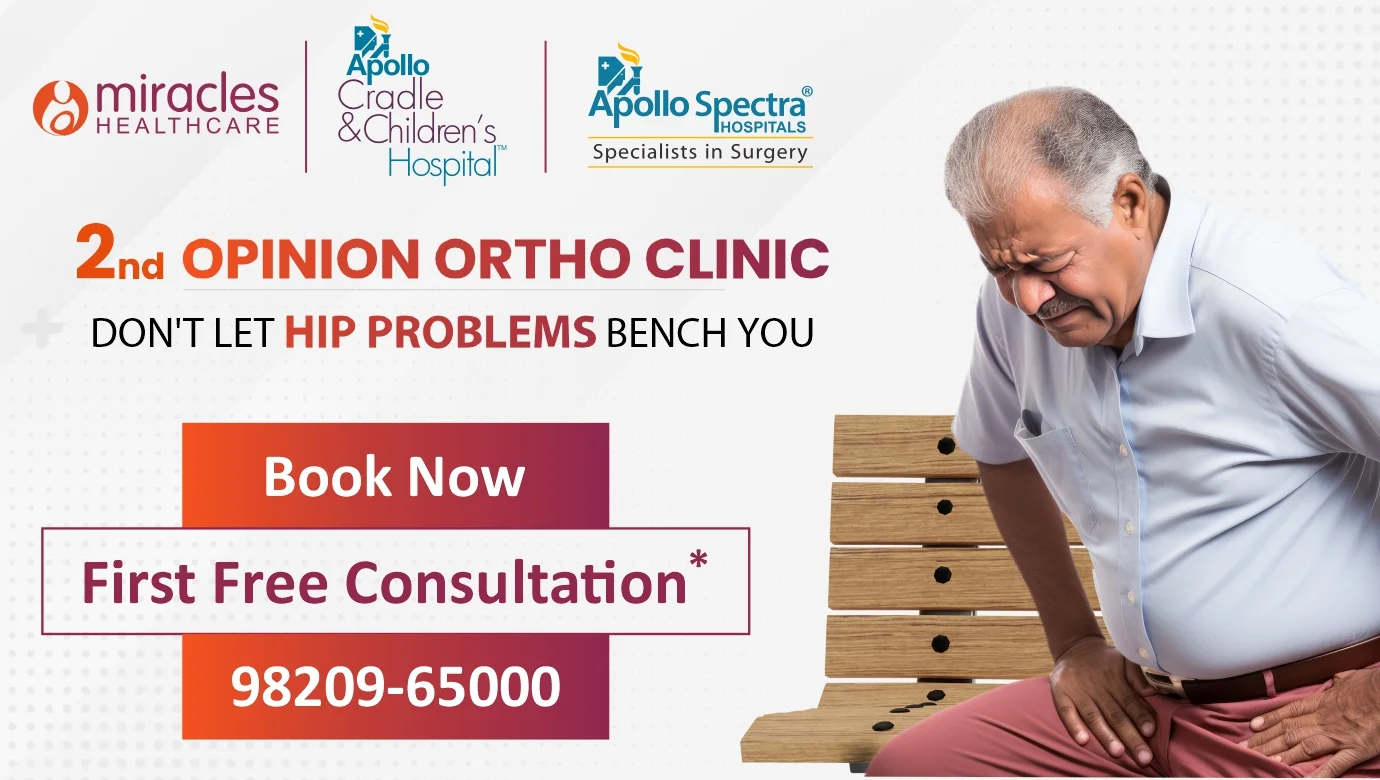Orthopedic Conditions We Treat
Comprehensive Care for Your Health

Anterior and posterior (ACL / PCL) cruciate ligaments are essential in stabilizing the knee joint. Contact sports players are most often victims to injuries in these regions, and can otherwise occur following trauma. Such injuries often lead to a painful swollen knee paired with serious discomfort in walking.
Arthroscopy is a minimally invasive surgical technique used to diagnose and treat various joint-related conditions. It involves inserting a small, flexible tube called an arthroscope into the joint through a small incision. This arthroscope is equipped with a camera and light source, allowing surgeons to view the interior of the joint on a monitor in real-time.
Through additional small incisions, specialized surgical instruments can be inserted to perform procedures like repairing damaged cartilage, removing loose fragments, trimming torn ligaments, or addressing inflammation. This procedure is commonly used to treat a range of joint issues, including sports injuries, osteoarthritis, rheumatoid arthritis, and cartilage tears.
Arthroscopy offers several advantages over traditional open surgery, including reduced recovery time, less post-operative pain, minimal scarring, and lower risk of complications such as infection. Moreover, it allows for a more precise and targeted approach to joint treatment, usually leading to better outcomes for patients.
Arthroscopic surgery can be classified into different types based on the particular joint being examined or treated. Some common types of arthroscopy include:
Knee Arthroscopy: Knee arthroscopy is one of the most common types and is used to diagnose and treat various knee conditions, including meniscal tears, ligament injuries (such as ACL or PCL tears), cartilage damage, synovitis, and patellar tracking issues.
Shoulder Arthroscopy: Arthroscopic shoulder surgery is performed to evaluate and treat conditions affecting the shoulder joint, such as rotator cuff tears, labral tears, shoulder impingement syndrome, shoulder instability, and arthritis.
Hip Arthroscopy: Hip arthroscopy is used to diagnose and treat a range of hip joint conditions, including hip dysplasia, labral tears, femoroacetabular impingement (FAI), synovitis, and loose bodies within the joint.
Ankle Arthroscopy: Ankle arthroscopy involves examining and treating various ankle joint problems, such as cartilage lesions, ligament injuries, ankle impingement, synovitis, and osteochondral defects.
Elbow Arthroscopy: Elbow arthroscopy is less common but can be used to address several conditions such as osteoarthritis, loose bodies, tennis elbow, golfer's elbow, and osteochondritis dissecans.
Wrist Arthroscopy: Wrist arthroscopy allows for the evaluation and treatment of several conditions affecting the wrist joint, including ligament tears, cartilage injuries, ganglion cysts, and arthritis.
These are some of the main types of arthroscopy, each tailored to address specific joint-related issues and conditions. The choice of arthroscopic procedure depends on the patient's symptoms, clinical findings, and imaging results, as well as the expertise of the surgeon performing the procedure.
Arthroscopy is required for several reasons:
Diagnosis: It allows for direct visualization of the inside of the joint, enabling doctors to accurately diagnose various joint-related conditions such as cartilage damage, ligament tears, inflammation, and arthritis.
Treatment: Arthroscopic surgery enables surgeons to perform minimally invasive procedures to treat joint problems. This may include repairing torn ligaments, removing loose cartilage or bone fragments, smoothing out damaged cartilage surfaces, or addressing inflamed tissue.
The right candidate for arthroscopy typically meets certain criteria:
Diagnosis: The candidate should have a confirmed or suspected joint condition that can be diagnosed or treated using arthroscopy. Common conditions include meniscal tears, ligament injuries (such as ACL tears), cartilage damage, synovitis, and loose bodies within the joint.
Failed Conservative Treatment: Arthroscopy is often considered when conservative treatments such as rest, physiotherapy, medications, and injections have failed to relieve symptoms or improve the underlying condition.
Good General Health: The candidate should be in overall good health, without any medical conditions such as uncontrolled diabetes, heart disease, or active infections. These conditions may need to be stabilized before considering arthroscopy as they would increase the risks associated with surgery or anesthesia.
Orthopedic Evaluation: Before recommending arthroscopy, the candidate should undergo a thorough orthopedic evaluation by a qualified orthopedic doctor who can evaluate the severity of the joint condition, discuss treatment options, and determine whether arthroscopy is the most appropriate course of action.
The decision to undergo arthroscopy should be made by an orthopedic surgeon taking into account the individual's specific medical history, symptoms, lifestyle, and treatment goals.
Preparing for arthroscopy typically involves the following steps:
Consultation with an arthroscopic surgeon: Schedule a consultation with an arthroscopic surgeon, who will evaluate your condition, discuss the need for arthroscopy, and provide information about the procedure, including potential risks and benefits.
Pre-operative Evaluation: Your orthopedic doctor may order pre-operative tests, such as blood tests, imaging studies (like X-rays or MRI), or an electrocardiogram (ECG), to assess your overall health and ensure you are suitable for surgery.
Medication Review: Inform your orthopedist about any medications, supplements, or herbal remedies you currently take. Some medicines may need to be adjusted or temporarily stopped before surgery, especially those that affect blood clotting or interact with anesthesia
Refrain from Eating and Drinking: Follow your surgeon's instructions regarding fasting before surgery. Generally, you will be asked to refrain from eating or drinking anything (including water) for a specific period before the procedure to reduce the risk of anesthesia-related complications.
Follow Pre-operative Instructions: Your surgeon will provide specific instructions to prepare for surgery, including when to stop eating and drinking, which medications to take or avoid, and how to prepare the surgical site.
By following these steps in consultation with your ortho surgeon, you can help ensure a smooth and successful arthroscopic procedure and recovery
Arthroscopy is typically performed as follows:
Anesthesia: Before the procedure starts, the patient is given anesthesia to ensure they are comfortable and pain-free. Depending on the joint being operated on and the preference of the surgical team, either general or regional anesthesia may be used.
Incisions: Once the anesthesia has taken effect, small incisions, usually around 0.5 to 1 centimeter in size, are made near the joint being treated. These incisions act as entry points for the arthroscope and other surgical instruments.
Arthroscopic Examination: The surgeon inserts the arthroscope, a thin, flexible tube with a camera and light source at the tip, through one of the incisions and into the joint. This allows them to view the inside of the joint on a monitor in real time.
Surgical Procedure: Additional specialized instruments are inserted through the other incisions to perform the surgical procedures. These may include repairing torn ligaments, removing damaged cartilage or bone fragments, smoothing out rough surfaces, or addressing inflamed tissue.
Closure: Once the surgical procedure is completed, the instruments are removed, and the incisions are generally closed with sutures or surgical tape. In some cases, a sterile dressing may be applied to the incision sites.
Arthroscopy offers several advantages over traditional open surgery for diagnosing and treating joint conditions:
Minimally Invasive: Arthroscopic operation involves making small incisions rather than large open wounds, resulting in less trauma to surrounding tissues, reduced post-operative pain, and faster recovery times for patients.
Direct View: With the use of an arthroscope, surgeons can directly view the inside of the joint in real-time on a monitor, allowing for precise diagnosis and targeted treatment of joint conditions.
Minimal Scarring: The smaller incisions used in arthroscopy result in minimal scarring compared to open surgery, leading to improved cosmetic outcomes and reduced risk of keloid formation or hypertrophic scarring.
Faster Recovery: Due to the minimally invasive nature of arthroscopy, patients generally experience shorter hospital stays, quicker return to normal activities, and faster rehabilitation.
Lower Risk of Complications: Arthroscopy is associated with lower rates of complications such as infection, bleeding, and nerve damage compared to traditional open surgery, making it a safer option for many patients.
Outpatient Procedure: In many cases, arthroscopy can be performed as an outpatient procedure, allowing patients to return home on the same day of surgery and resume their daily activities more quickly
Customized Treatment: Arthroscopy allows surgeons to customize treatment to each patient's specific needs, whether it involves repairing damaged tissue, removing debris or loose bodies, or addressing underlying joint pathology.
Preservation of Healthy Tissue: Arthroscopic techniques minimize damage to healthy surrounding tissues, preserving joint function and integrity while effectively treating the underlying condition.
After arthroscopy, patients can expect a period of recovery and rehabilitation. Here is what to expect:
Immediate Postoperative Period: After the procedure, patients are generally monitored in a recovery area until they are awake and stable. The healthcare professionals will monitor the Vital signs such as heart rate, blood pressure, and oxygen saturation. Patients may experience some pain or discomfort at the surgical site, which can be managed with pain medications prescribed by your surgeon.
Discharge: Depending on the complexity of the procedure and the patient's overall condition, they may be discharged home on the same day of surgery or may require a short hospital stay for observation.
Rest and Elevation: Following arthroscopy, it's important to rest and elevate the operated limb to reduce swelling and promote healing. Patients may be instructed to keep the joint elevated above heart level as much as possible, especially during the first few days after surgery.
Activity Restrictions:Activity Restrictions: Patients are typically advised to avoid strenuous activities, heavy lifting, and excessive weight-bearing on the operated joint for a specified period, as recommended by their surgeon. Slowly reintroduction of activities is usually guided by the surgeon or physiotherapist.
Physiotherapy: Rehabilitation plays an important role in recovery after arthroscopy. Patients may be prescribed customized physiotherapy to improve joint mobility, strength, and function. Physical therapy exercises may start shortly after surgery and continue for several weeks or months, depending on the individual's progress.
Follow-up Appointments: Patients will need to attend follow-up appointments with their surgeon to monitor their progress, remove sutures if required, and adjust treatment plans as needed. These appointments allow them to evaluate the healing process and address any concerns or complications that may arise.
Return to Normal Activities: The timeline for returning to normal activities varies depending on the type of procedure performed, the joint involved, and the individual's overall health and recovery progress. Patients should follow their surgeon's guidance regarding the gradual resumption of activities, taking care to avoid activities that may put undue stress on the operated joint.
After arthroscopy, it's important to take proper care of yourself to promote healing and minimize the risk of complications. Here are some key aspects of post-operative care after surgical arthroscopy:
Follow Post-operative Instructions: Adhere to the specific instructions provided by your surgeon regarding wound care, activity restrictions, medications, and follow-up appointments. This may include guidelines on showering, dressing changes, and resuming normal activities.
Manage Pain and Swelling: Take pain medications as prescribed by your surgeon to manage pain, discomfort, and swelling. Additionally, applying ice packs to the surgical site for 15-20 minutes at a time several times a day can help reduce swelling and pain. Be sure to protect your skin from direct contact with ice by wrapping the ice pack in a cloth or towel.
Rest and Elevate the Operated Limb: Rest is important for the initial stages of recovery. Elevate the operated limb above heart level whenever possible to reduce swelling and promote circulation. Use pillows or cushions to support the limb while lying down or sitting.
Use Assistive Devices: If prescribed by your surgeon use assistive devices such as crutches, walkers, or slings to help mobility and support the operated joint. Follow instructions on how to use these devices safely and effectively.
Gradual Resumption of Activities: Slowly reintroduce activities as guided by your surgeon or physiotherapist. Start with gentle range-of-motion exercises and gradually progress to strengthening and functional exercises. Avoid high-impact activities or heavy lifting until cleared by your surgeon.
Physiotherapy: Participate actively in any prescribed physiotherapy or rehabilitation program. The physiotherapy exercise program is important for restoring joint mobility, strength, and function, as well as preventing stiffness and promoting optimal recovery.
Monitor for Signs of Complications: Keep an eye out for signs of infection, such as increased pain, redness, swelling, warmth, or drainage from the incision site. Contact your surgeon immediately if you experience any of these symptoms or if you have concerns about your recovery.
Maintain a Healthy Lifestyle: Eat a balanced diet, stay hydrated, and get adequate rest to support the healing process. Avoid smoking and excessive alcohol consumption, as these can interfere with healing and increase the risk of complications.
By following these post-operative care guidelines in consultation with your arthroscopic surgeon you can promote a smooth and successful recovery after the arthroscopic operation.
While arthroscopy is generally considered a safe procedure, there are some possible risks and complications associated with it. These include:
Infection: As with any surgical procedure, there is a risk of infection at the site of incisions or within the joint itself. Precautions are taken to minimize this risk, such as using sterile techniques and administering antibiotics before surgery.
Bleeding: Some bleeding may occur during or after arthroscopy, particularly if blood vessels are accidentally damaged during the procedure. Excessive bleeding may require further intervention or blood transfusion.
Blood clots: Prolonged immobility during and after arthroscopy can increase the risk of developing blood clots in the legs. Different measures such as early mobilization, compression stockings, and blood-thinning medications may be used to reduce this risk.
Nerve or blood vessel damage: There is a small risk of injury to nerves or blood vessels near the surgical site, which can lead to numbness, weakness, or other neurological symptoms.
Stiffness or limited range of motion: In some cases, arthroscopy may result in stiffness or limited range of motion in the joint, especially if extensive tissue manipulation or scar tissue formation occurs during the procedure.
Allergic reactions: Some patients may have allergic reactions to anesthesia, medications, or materials used during the procedure, such as surgical implants or irrigation fluids.
Constant pain or recurrence of symptoms: Despite successful treatment, some patients may continue to experience pain or have a recurrence of symptoms after arthroscopy. This could be due to incomplete resolution of the underlying condition or the development of new issues in the joint.
While these risks are relatively low, patients should discuss them with their arthroscopic surgeon before undergoing arthroscopy and follow post-operative instructions carefully to minimize complications.
The cost of arthroscopy can vary depending on various factors:
Type of Arthroscopy: Different types of arthroscopy are used for different joints. The specific joint being examined or treated can affect the cost of the procedure. For example, knee arthroscopy may be more complex and costly than arthroscopy of smaller joints like the wrist or ankle.
Procedure Complexity: The complexity of the arthroscopic procedure itself, including the extent of the damage or pathology within the joint, can affect the cost. More complex procedures may require additional surgical time, specialized equipment, and expertise, leading to higher costs.
Surgeon's Experience and Expertise: Surgeon's fees may vary depending on their experience, reputation, and geographic location. Orthopedic surgeons with specialization in arthroscopic techniques may command higher fees.
Hospital Fees: The facility where the arthroscopy is performed will typically charge fees for the use of operating rooms, equipment, nursing staff, and other resources. The type of facility and its location can impact these fees.
Anesthesia Fees: The type of anesthesia used (general, regional, or local anesthesia) and the duration of anesthesia administration can affect the fees.
Pre-operative Evaluation and Testing: Pre-operative evaluations, such as imaging studies (X-rays, MRI) and laboratory tests, may be required to evaluate the patient's overall health and suitability for surgery. These additional tests can contribute to the overall cost of arthroscopy.
Post-operative Care and Rehabilitation: The cost of post-operative care, including medications, physiotherapy, and follow-up appointments, should also be considered. Rehabilitation services are important for optimizing recovery and restoring function but can add to the overall cost of treatment.
Insurance Coverage: The extent of insurance coverage and any out-of-pocket expenses. Patients should check with their insurance provider to understand their coverage and potential out-of-pocket costs.
Complications: Unexpected complications during or after the procedure may necessitate additional medical services or interventions, potentially increasing the overall cost of treatment
Miracles Apollo Cradle/Spectra is the best hospital for arthroscopy in Gurgaon, boasting a stellar reputation supported by its dedicated team of ortho doctors in Gurgaon. With a focus on delivering unparalleled expertise and care, the hospital offers state-of-the-art facilities and cutting-edge technology, ensuring precise diagnosis and effective treatment for a range of orthopedic conditions. Our experts are adept at performing arthroscopic procedures with utmost precision and efficiency. From initial consultation to post-operative care, we are providing complete support every step of the way.
If you are looking for the best orthopedic doctor near you for surgical arthroscopy, don't hesitate to reach out to us. Contact us now to book an online consultation.


Comprehensive Care for Your Health
Meet our expert team of Orthopedic where compassionate care meets expertise.
Inspiring Journeys: True Patient Stories
Miracles Apollo Cradle is a leading Maternity Hospital Gurgaon. We strive to give the best care to our patients.






Your Health, Our Network: Comprehensive Care Across Every Facility.
Learn about the world class health care we provide
Expert Advice and Health Tips
Learn about the world class health care we provide
Arthroscopy is a minimally invasive procedure and is typically not considered major surgery.
Arthroscopy can treat various joint conditions, including meniscal tears, ligament injuries, cartilage damage, and synovitis.
Arthroscopy is generally safe, with lower risks of complications compared to traditional open surgery.
Pain levels after arthroscopy vary, but discomfort is usually managed with medication and decreases over time.
Recovery from arthroscopy typically takes a few weeks, with full recovery depending on the procedure performed and individual factors.